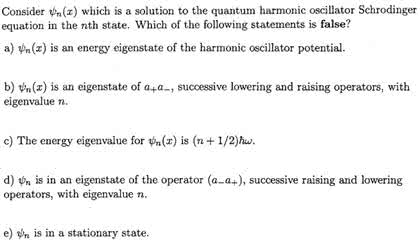8.231 Lecture Notes - Lecture 1: Pauli Matrices, Hydrogen Atom, Particle System
Document Summary
In classical mechanics, a state of a particle"s motion is speci ed by its position r and momentum p at a given time t, (r (t) , p (t)), where the momentum is de ned as. 1st order time derivative, p mv = m dr dt with m as its mass. Notice that both the position and momentum can be measured experimentally. The equation of motion which determines (r (t) , p (t)) is given by. Newton"s 2nd law of motion involving 2nd order time derivative dp dt. = m d2r dt2 = f where f is the total force acting on the particle. If the initial condition (r (0) , p (0)) is given, one can from the above equation determine completely the particle"s motion (r (t) , p (t)) at any later time. An equivalent description is provided by hamiltonian formalism.



